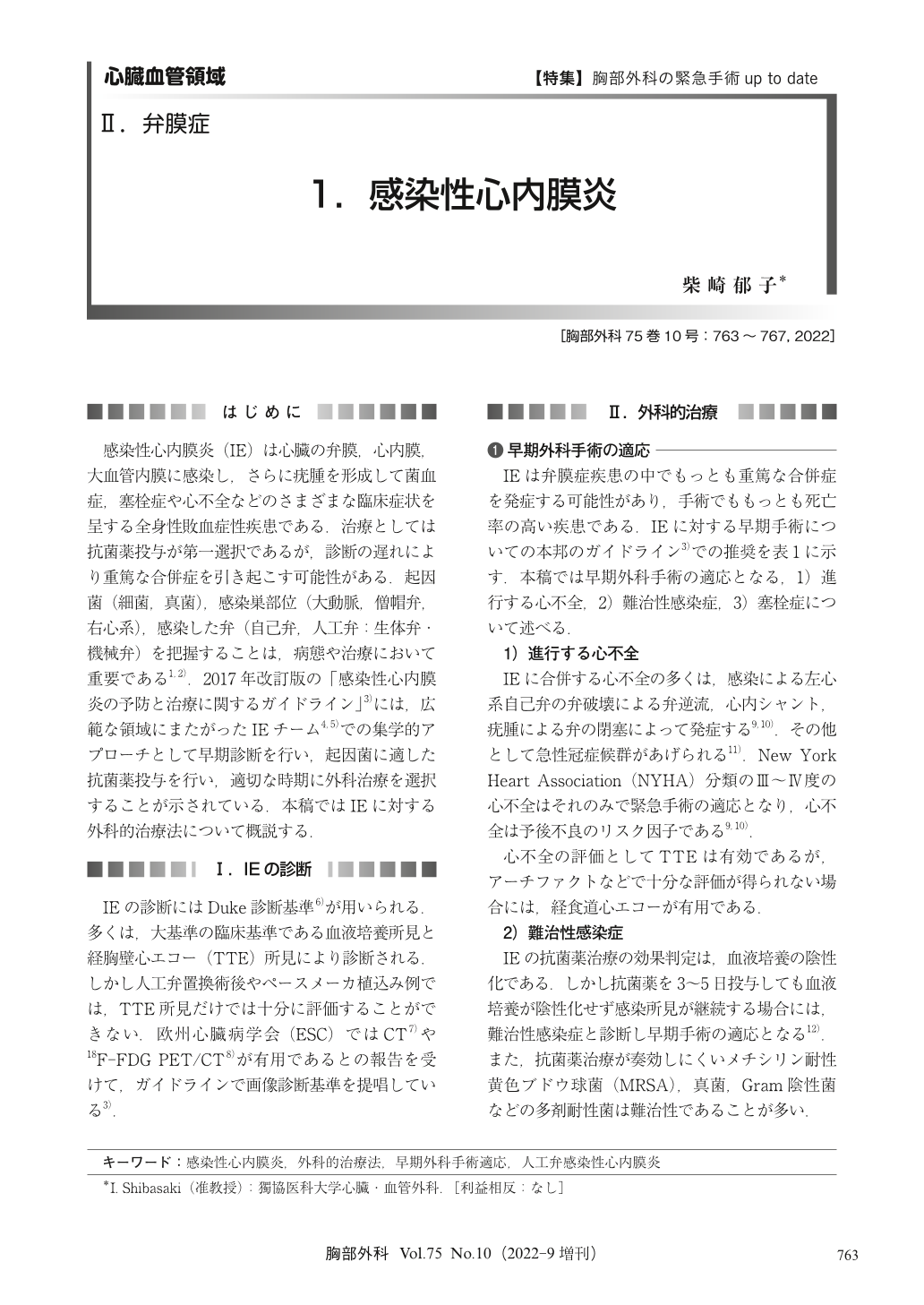Japanese
English
- 有料閲覧
- Abstract 文献概要
- 1ページ目 Look Inside
- 参考文献 Reference
感染性心内膜炎(IE)は心臓の弁膜,心内膜,大血管内膜に感染し,さらに疣腫を形成して菌血症,塞栓症や心不全などのさまざまな臨床症状を呈する全身性敗血症性疾患である.治療としては抗菌薬投与が第一選択であるが,診断の遅れにより重篤な合併症を引き起こす可能性がある.起因菌(細菌,真菌),感染巣部位(大動脈,僧帽弁,右心系),感染した弁(自己弁,人工弁:生体弁・機械弁)を把握することは,病態や治療において重要である1,2).2017年改訂版の「感染性心内膜炎の予防と治療に関するガイドライン」3)には,広範な領域にまたがったIEチーム4,5)での集学的アプローチとして早期診断を行い,起因菌に適した抗菌薬投与を行い,適切な時期に外科治療を選択することが示されている.本稿ではIEに対する外科的治療法について概説する.
Infective endocarditis is an infection of the endocardium that can cause major complications. While surgery may reduce complications and improve survival, the surgery is of high risk and has a high mortality rate. Indications for early surgical treatment include advanced heart failure, refractory infection, and embolism. The most prominent form of heart failure associated with infective endocarditis is valve regurgitation owing to valve destruction caused by the infection. If the infection is not resolved after 3-5 days of antimicrobial therapy, the diagnosis of refractory infection should be made, and early surgical intervention should be performed. The most frequent embolism is of the central nervous system. Guidelines in Japan state that surgery should not be postponed in the case of cerebral infarction and recommend waiting four weeks for open heart surgery in the case of new intracranial hemorrhage. In addition, the presence of infected cerebral aneurysms should not be overlooked during early surgical intervention. Infected cerebral aneurysms are diagnosed using computed tomography angiography or magnetic resonance angiography. Finally, it is important to consider the timing of surgery based on day-to-day changes in the patient’s condition, including onset of heart failure, infection status, and vegetation expansion.

© Nankodo Co., Ltd., 2022


